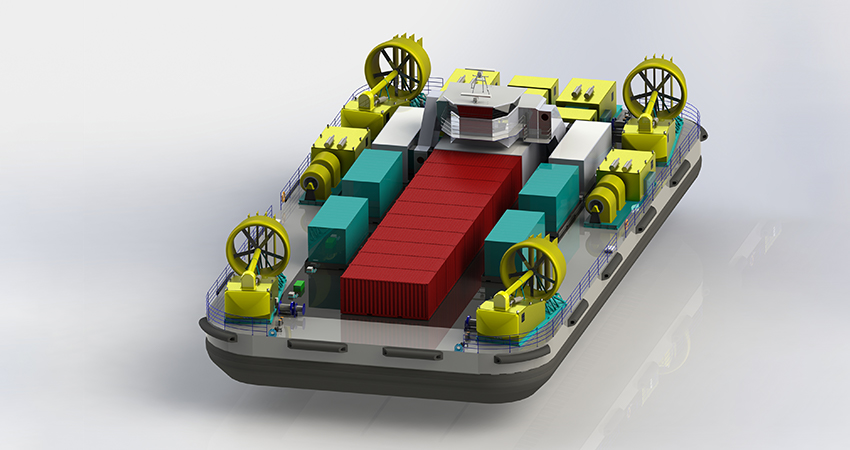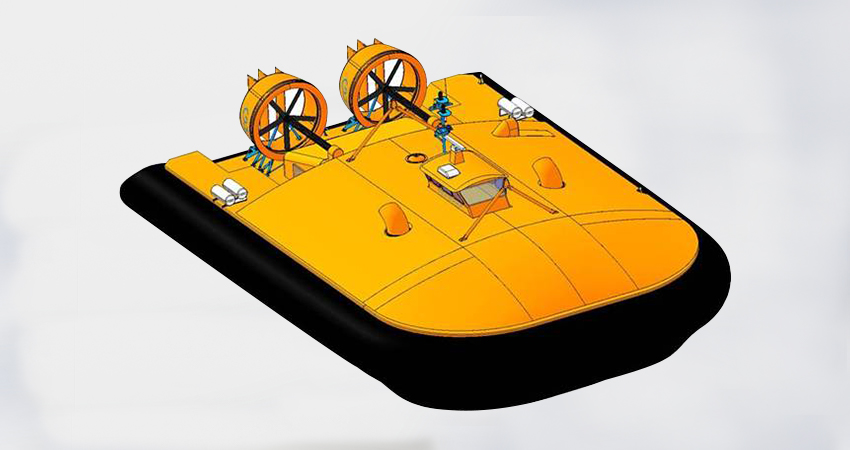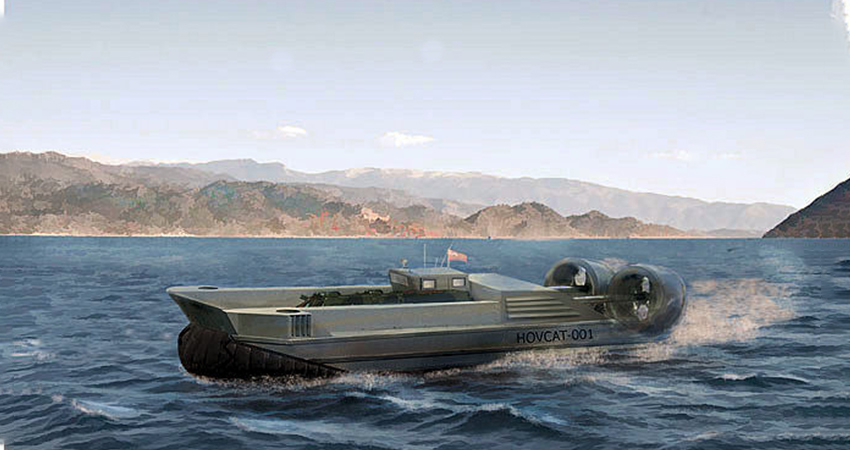Solutions for challenging requirements
At Griffon Hoverwork we are developing a number of pioneering new solutions that use the hover principle. This is founded on our current range of hovercraft, from our smallest inshore craft, to the largest sea going hover ferries.

Partially Air Cushioned Supported Catarmaran (PACSCAT)
Griffon Hoverwork built the first prototype of the Partial Air Cushion Supported Catamaran (PACSCAT) for the Royal Navy in 2010. The concept was originated by IMAA Ltd, UK and was developed into a detailed design by QinetiQ. It is designed for the fast deployment, of high payloads onto a beach from an amphibious assault ship which has limited space for a landing craft. PACSCAT is a proven, scalable solution for the next generation of fast landing craft.

Self Propelled Hoverbarges
We have designed self propelled hover platforms (barges) that are capable of moving equipment to shallow water, soft land areas and ice environments; they have a capacity of carrying loads from 30 tonnes to 300 tonnes and include marine grade aluminium hulls, diesel powered lift capability and segmented skirts.

Oil Rig Ice Support Hovercraft
he exploration for oil in ice prone arctic waters is driving the need for a new breed of hovercraft. The industry requires solutions able to cope with ice ridges and transient ice/ water conditions. GHL is developing a new range of much larger craft, able to cross 3m ice obstacles, and operate in extremely harsh conditions. We are developing concepts for rig evacuation, 40 tonne payload transfer of crew and supplies, in addition to 100 tonne+ hover barges for larger item transitions.

HOV-CAT
The HOVCAT builds on the idea of PACSCAT but uses air propellers as opposed to water jets. The HOVCAT concept has a catamaran type hull with skirt segments attached underneath It has been designed with the requirements of the Royal Marines; needing a fast amphibious landing craft, which would fit within the confines of the 8m wide docks in their assault ships and having the ability to land up to 20 tonnes of equipment and men, onto a beach.
A man model of the concept has been built by IMAA Ltd and has been tested in collaboration with GHL and has been found to be both capable and stable despite its low beam to length ratio.

